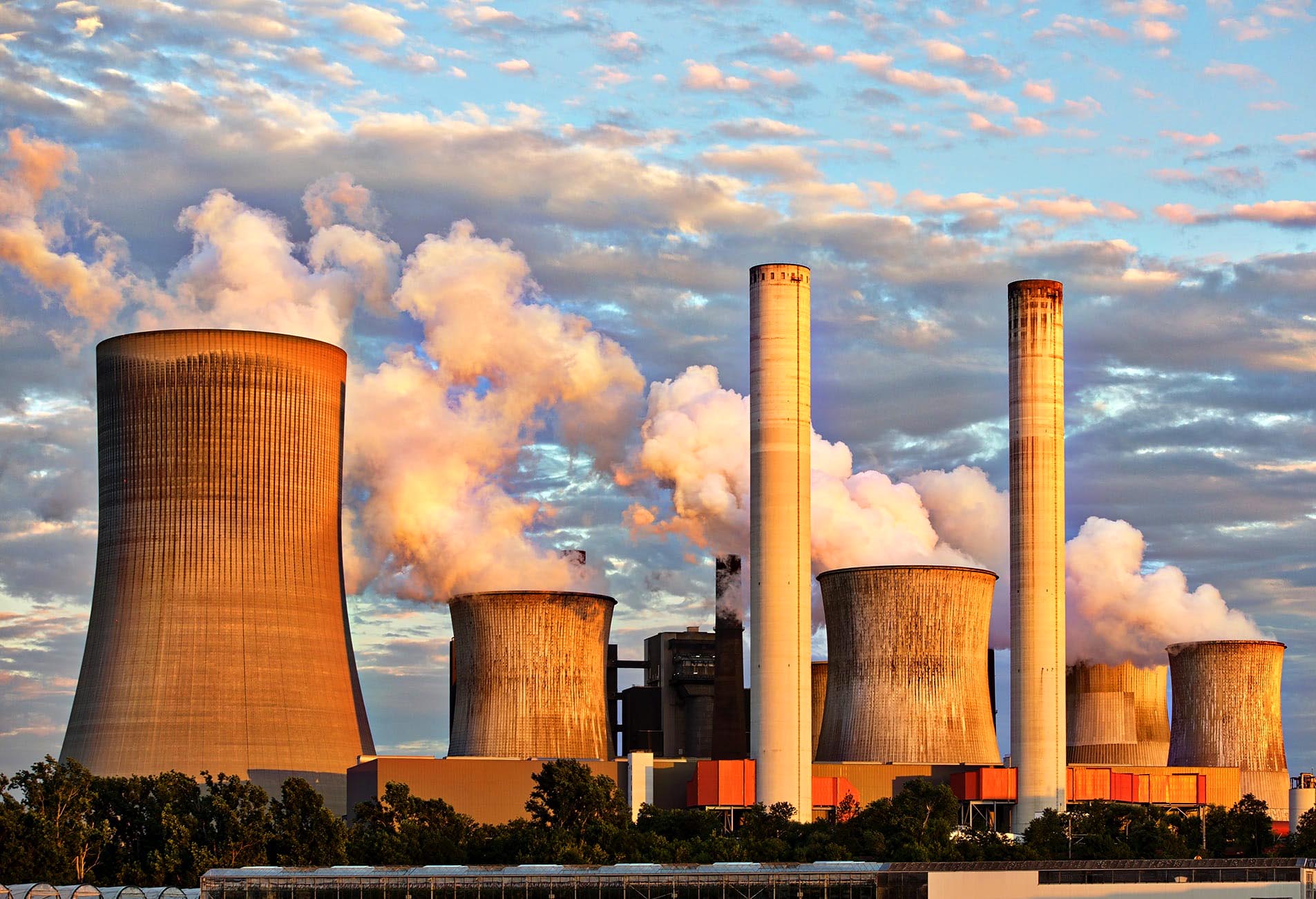
The study by the ECR Party provides a detailed analysis of the green transition in the European Union (with a focus on the balance between ambition and reality in the implementation of the European Green Pact). The main objective of this research is to analyze the policy and legislative measures adopted at EU level with the aim of achieving Europe’s climate neutrality by 2050 and to examine how the complexity and scale of this process aligns with the economic and social realities in the Member States. In the context of the European Green Pact, the green transition is not only a necessary change to achieve climate neutrality by 2050, but also an opportunity for profound economic and social transformation of the whole European society.
What are the ambitions of the European Green Pact?
The European Green Deal is a European Union initiative to combat climate change and promote sustainability. Launched in 2019, it aims to reduce net greenhouse gas emissions to zero by 2050. The declared aim of those who support this Green Deal is to make Europe the first climate-neutral continent, which is almost impossible and will lead to a series of social crises in member countries. It is well known that the Green Deal encompasses a wide range of policies and measures, including the Circular Economy Action Plan (which aims to minimize waste and encourage recycling) and the Farm to Fork Strategy (which aims for a sustainable food chain). These policies are supported by concrete legislative measures, such as the Climate Act 2021 (which sets the legal framework for achieving climate targets) and the Net-Zero Industry Act 2023 (which supports the development of clean technologies). However, despite this ambitious approach, the implementation of the Green Pact is a huge challenge for the old continent, given the economic and social diversity of the EU Member States.
Green Deal and the impact on Europe’s key economic sectors
This desire for a green transition has far-reaching implications for a number of economic sectors, the most affected of which are the energy, transport and industry sectors. It is well known that the energy sector is responsible for a large share of the EU’s carbon emissions, which is why this sector is at the heart of decarbonization efforts. The transition from fossil fuels to renewable sources, such as solar and wind energy, is key to achieving climate goals. However, this transition poses significant challenges related to the stability of energy transmission networks, the costs of changing infrastructure and the intermittency of renewable energy sources. The transport sector is also targeted for major reforms, with a focus on electrification of the car fleet and the development of alternative fuel infrastructure. The EU strategy includes banning the sale of vehicles with internal combustion engines by 2035 and boosting the production of electric vehicles. Of course this shift requires substantial investment in charging infrastructure as well as battery production and recycling capacities. Heavy industries such as steel and cement face similar challenges. Decarbonizing these industries will require innovative technologies such as carbon capture and storage (CCS) and a transition to green hydrogen. These technologies are still in the development phase and are extremely costly, which raises questions about the economic feasibility of such measures in the short to medium term.
Social and political challenges of the green transition
Experts recognize that the green transition is not only a technological and economic challenge, but also a social and political one. Public acceptance of climate action is crucial to its success. While there is broad support for climate action among European citizens, studies show that this support decreases when it comes to specific measures that affect everyday life, such as reducing energy consumption or changing modes of transportation. Another critical issue is regional inequality within the EU. Member States are known to have different levels of economic development and infrastructure. This can be translated into the fact that their capacity to implement Green Pact measures varies considerably. An example is the Eastern European countries which depend heavily on coal for energy production. These countries face greater challenges than those in Western Europe, where the transition to renewable energy sources is much more advanced. To address these inequalities, the EU has set up the Just Transition Fund (JTF). The JTF aims to support the regions and sectors most affected by the green transition. There are concerns that the funds allocated are not sufficient to cover all needs, and their allocation has generated intense political debate in the European Council.
What are EU strategies for innovation and economic competitiveness?
To support the green transition, the EU has adopted several strategies to boost innovation and economic competitiveness. The Industrial Plan for the Net-Zero Era, launched in 2023, is a central pillar of this approach. This plan includes legislative measures such as the “Zero Emission Industries Act” and the “Critical Raw Materials Act”, which aim to support the development and uptake of clean technologies and ensure fair access to the necessary resources for Member States.

Another key component is the Carbon Border Adjustment Mechanism (CBAM), which aims to protect European industries from unfair competition from countries with less stringent environmental standards. The CBAM will introduce taxes on imports of products that do not meet EU emission standards, thus encouraging a global shift towards more sustainable practices. However, implementing these strategies is not without controversy. There are fears that strict regulations could undermine the global competitiveness of European industry, especially in the face of competition from China and the United States. These two countries have their own green transition policies. In addition, the transition to a green economy requires massive investments from both the public and private sector, which raises questions about the financial sustainability of these efforts in the long term. This raises the question of how many private sector companies will survive in the market and what will be the social scale in the EU economy?
Case study: The automotive sector and the transition to green mobility
One of the most affected by the green transition is the automotive sector. Given its importance to the European economy and its significant environmental impact, banning the sale of vehicles with internal combustion engines by 2035 is an unprecedented measure that will radically transform the automotive industry. European manufacturers face the challenge of shifting production to electric vehicles, which requires huge investments in technology, infrastructure and workforce. Another important issue is the development of the charging infrastructure for electric vehicles, which is crucial to the success of this transition. The Alternative Fuel Infrastructure Regulation (AFIR), adopted by the EU, foresees the development of an extensive network of charging stations across Europe. However, implementation of this regulation varies significantly between Member States, depending on their level of development and political commitment. The transition to green mobility is not without challenges. The production of electric vehicles involves the use of scarce and expensive materials such as lithium and cobalt, which raises questions about the sustainability of supply chains and the environmental impact of extracting these resources. In addition, battery recycling is another major challenge given the complexity of the process and the need to develop efficient recycling technologies.
What are the challenges and opportunities for decarbonization in heavy industry?
Heavy industry (including sectors such as steel, cement and chemicals) is responsible for a large share of Europe’s greenhouse gas emissions. Decarbonizing these sectors is essential to meet climate goals, but it is also technologically and economically extremely challenging. Carbon capture and storage (CCS) technologies are seen as key to reducing emissions in these industries. These technologies capture the CO2 emitted in the production process and store it underground, preventing its release into the atmosphere. However, CCS is an extremely expensive and controversial technology. That is why its large-scale deployment faces significant obstacles related to cost, public acceptance and availability of the necessary infrastructure. Another crucial element in decarbonizing heavy industry is green hydrogen, which can replace fossil fuels in industrial processes. Green hydrogen is produced by electrolyzing water using renewable energy, making it a zero-emission solution. However, the production of green hydrogen is still limited and costly, and the development of the infrastructure needed to use it on a large scale is in its early stages. In addition, there are concerns about global competition in the context of decarbonization. While the EU imposes stringent environmental standards, other regions of the world, such as Asia and North America, may have less ambitious policies, which could create a competitive imbalance. To address this problem, the EU is exploring safeguards such as the Carbon Border Adjustment Mechanism (CBAM), designed to prevent imports that do not meet EU environmental standards.
Challenges and Innovative Solutions on Financing the Green Transition
One of the biggest challenges of the green transition is mobilizing the financial resources needed to implement decarbonization measures and transition to a green economy. Estimates show that the EU needs to invest around €350 billion annually over the next decade to reach its climate and digitization targets. This amount is considerable and requires close collaboration between the public and private sectors. The EU has developed several financial instruments to support the green transition, such as the Just Transition Fund (JTF), which is designed to help regions and sectors affected by the transition to a green economy. InvestEU, the EU’s investment program, also plays a crucial role in mobilizing private finance for sustainable projects. However, there are concerns that these funds are not sufficient to cover all needs and that innovative solutions are needed to attract more private investment. Green bonds are another important financial solution. They are debt instruments issued by governments or companies to finance sustainable projects such as renewable energy or green infrastructure. The market for green bonds has grown significantly in recent years, but there are still challenges in standardizing these instruments and ensuring the transparency and credibility of the projects financed. Central banks and financial regulators play a crucial role in supporting the green transition. By including climate risks in their risk assessments and promoting investments in sustainable assets, they can encourage the financial system to support climate objectives. In addition, the EU is exploring options to integrate sustainability criteria into tax and investment policy, which could include reforming taxation to encourage greener behaviors and generate additional revenues to finance the green transition.
Balancing ambition and reality in the EU green transition
The ECR Party study concludes that the EU’s green transition is a complex and multidimensional challenge, requiring a careful balance between ambitious climate targets and the economic and social realities of Member States. It is essential that the transition is managed in an equitable way, ensuring that all regions and sectors of the economy are adequately supported to avoid exacerbating existing inequalities. It is also crucial that the EU maintains global competitiveness while implementing the green transition. This involves not only developing and adopting innovative technologies, but also ensuring a legislative and regulatory framework that supports economic growth and job creation.The success of the green transition will depend on the EU’s ability to mobilize adequate financial resources and create a framework for international cooperation to support global climate action. Only through a coordinated and inclusive approach can the European Union achieve its climate goals and become a global leader in the fight against climate change.



 Subscribe
Subscribe